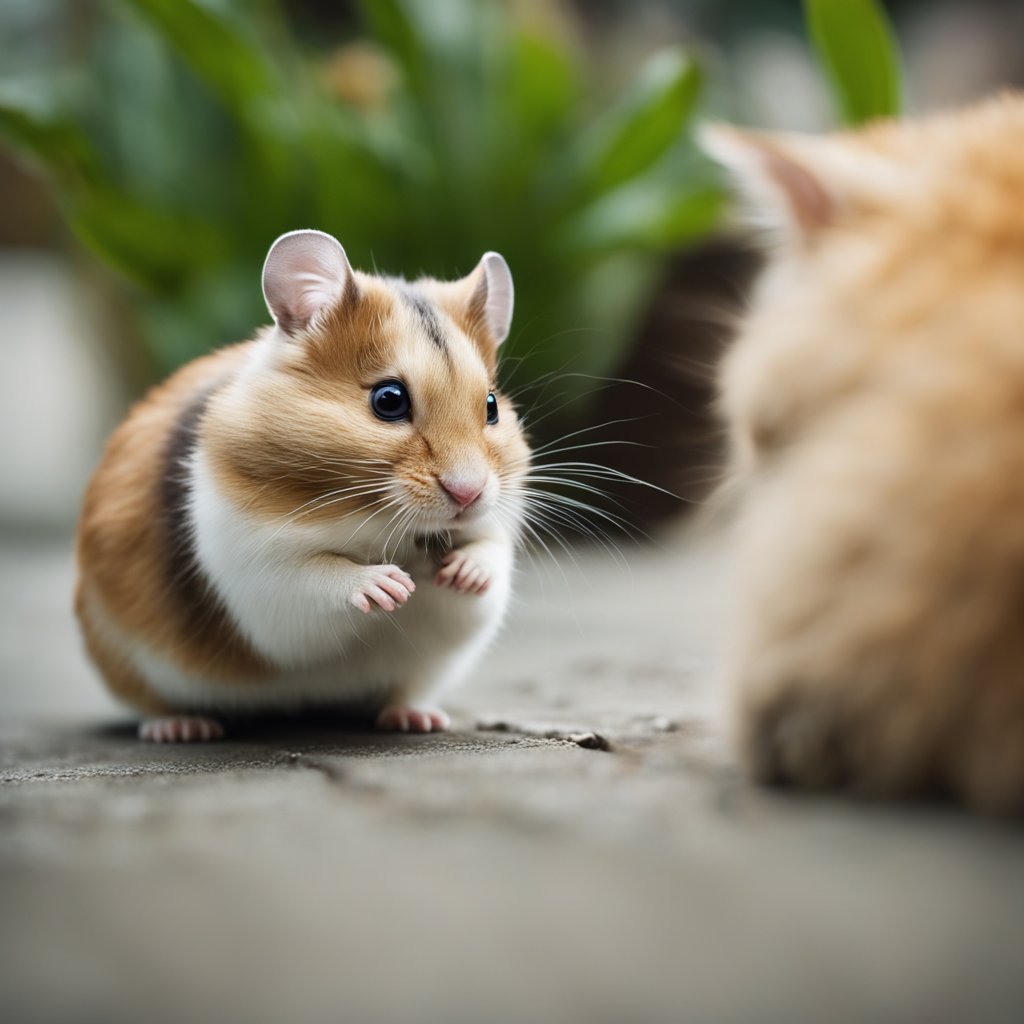What is Hamster’s Biggest Predator? A Comprehensive Guide
Hamsters are adorable, fluffy, and make great pets. But in the wild, hamsters face a variety of threats that can make their lives quite challenging. One of the biggest threats to hamsters in the wild is predation. Hamsters have many natural predators that pose a significant danger to their survival.
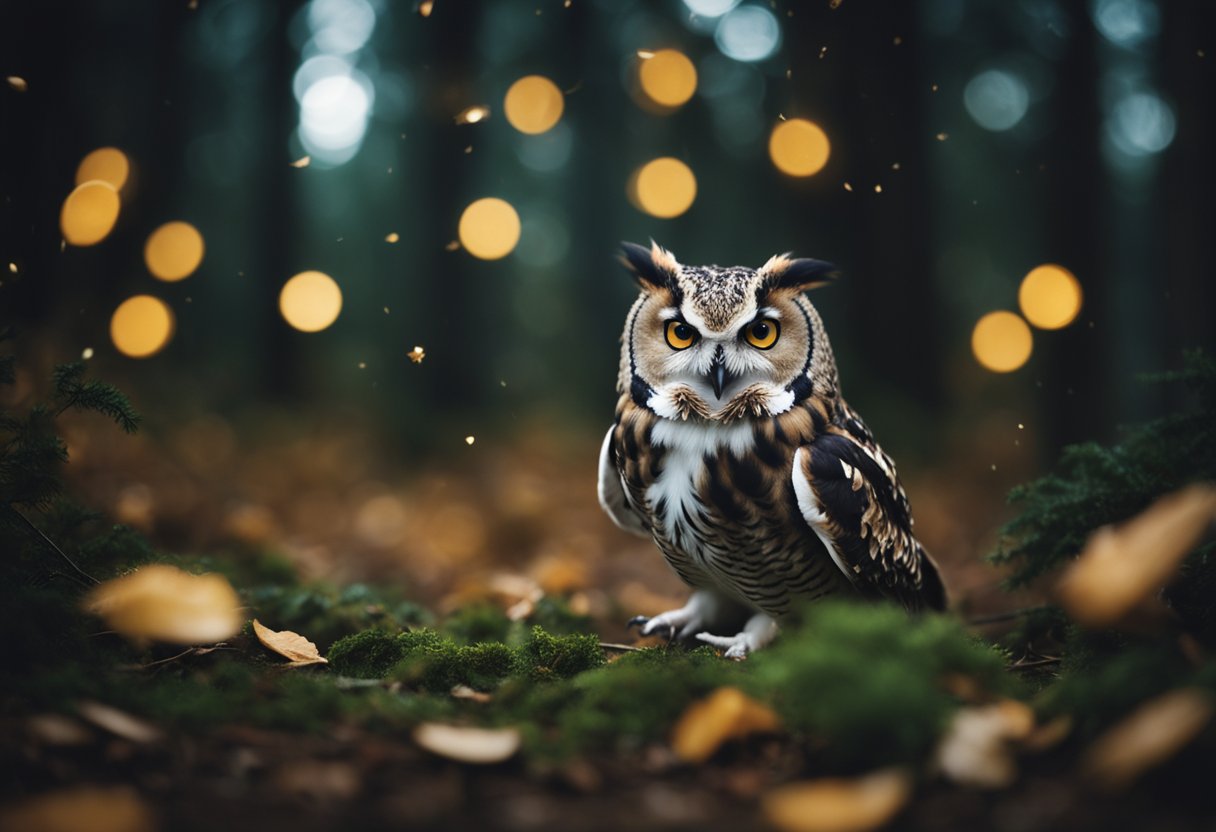
Hamsters in the Wild Hamsters are small, furry rodents that belong to the subfamily Cricetinae, within the family Cricetidae. They are primarily vegetarian but also eat insects and animals smaller than themselves. Hamsters in the wild are prone to predation from snakes, birds of prey, and larger mammals. Common predators of hamsters in the wild include foxes, stoats, badgers, and feral cats and dogs. European hamsters are crepuscular and sedentary, so they are usually safe from predators until they leave their burrows.
Predatory Threats Hamsters have many natural predators that pose a significant danger to their survival. Snakes, birds of prey, and larger mammals are all common predators of hamsters in the wild. In urban regions, hamsters are also preyed upon by feral cats and dogs. These predators can catch hamsters in a variety of ways, from stalking them to digging them out of their burrows. Hamsters are small and defenseless, so they rely on their ability to hide and escape predators to survive.
Key Takeaways
- Hamsters face many threats in the wild, including predation from snakes, birds of prey, and larger mammals.
- Common predators of hamsters in the wild include foxes, stoats, badgers, and feral cats and dogs.
- Hamsters rely on their ability to hide and escape predators to survive.
Hamsters in the Wild
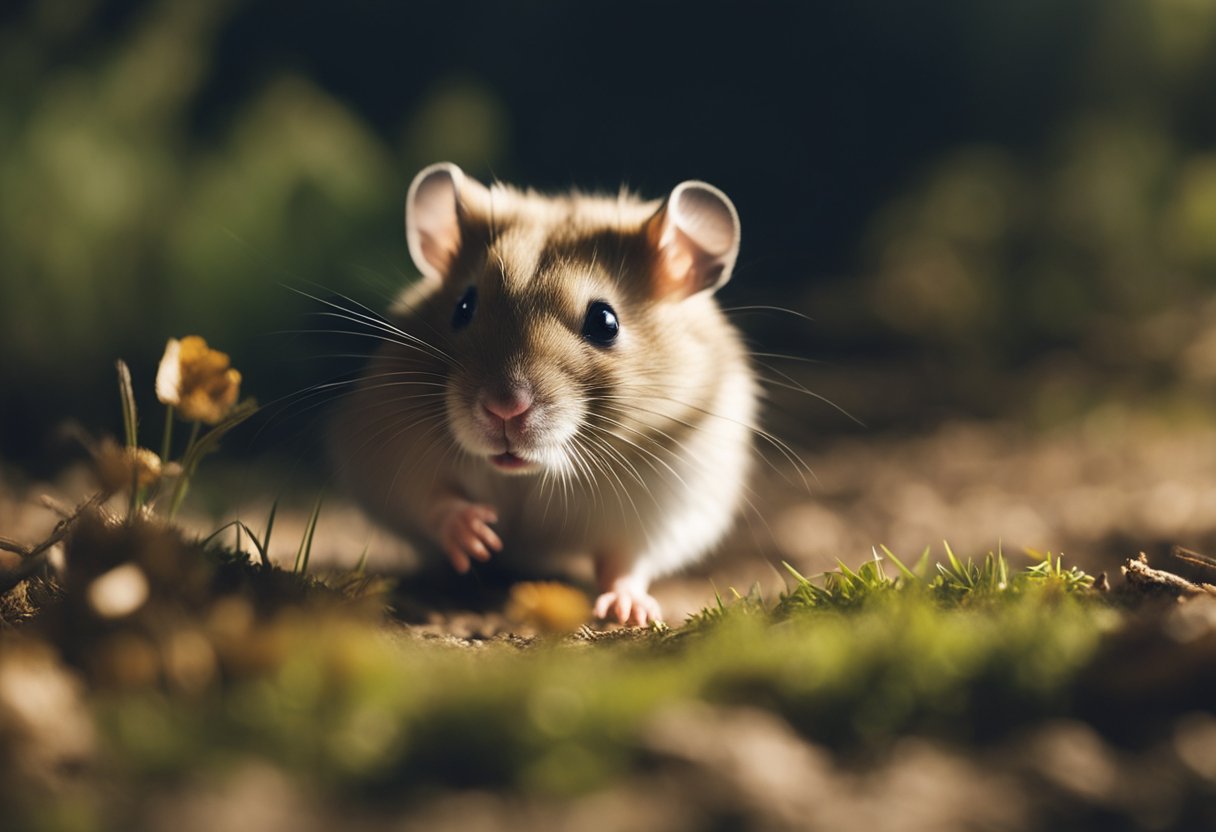
Hamsters are small, burrowing rodents that are native to parts of Europe and Asia. In the wild, hamsters live in arid or semi-arid regions, such as deserts, steppes, and grasslands. They are adaptable creatures that can survive in a range of habitats, from sand dunes to rocky outcrops.
Natural Habitat
Hamsters are found in a variety of countries, including Syria, Belgium, China, Greece, and Romania. The natural habitat of hamsters is warm, dry areas with low rainfall. They prefer to live in burrows that are well-protected from the elements and predators. In the wild, hamsters build their burrows in areas with soft soil, such as sand dunes or loamy soil. They also prefer to live in areas with low vegetation, as this makes it easier for them to spot predators.
Behavioral Adaptations
Hamsters have several behavioral adaptations that help them survive in the wild. For example, they are nocturnal, which means that they are active at night and rest during the day. This helps them avoid the heat of the day and predators that are active during daylight hours. Hamsters are also very good at digging, which allows them to build complex burrow systems that provide protection from predators and the elements. In addition, hamsters have very good hearing and sense of smell, which helps them detect predators and other threats.
Although hamsters are small and cute, they do have predators in the wild. Some of the common predators of hamsters include snakes, birds of prey, and predatory mammals like foxes, weasels, and ferrets. These predators are attracted to the scent of hamsters and will actively hunt them out. However, hamsters are not defenseless. They have large incisors that they can use to defend themselves, and female hamsters will carry their young away to safety in their cheek pouches.
Predatory Threats
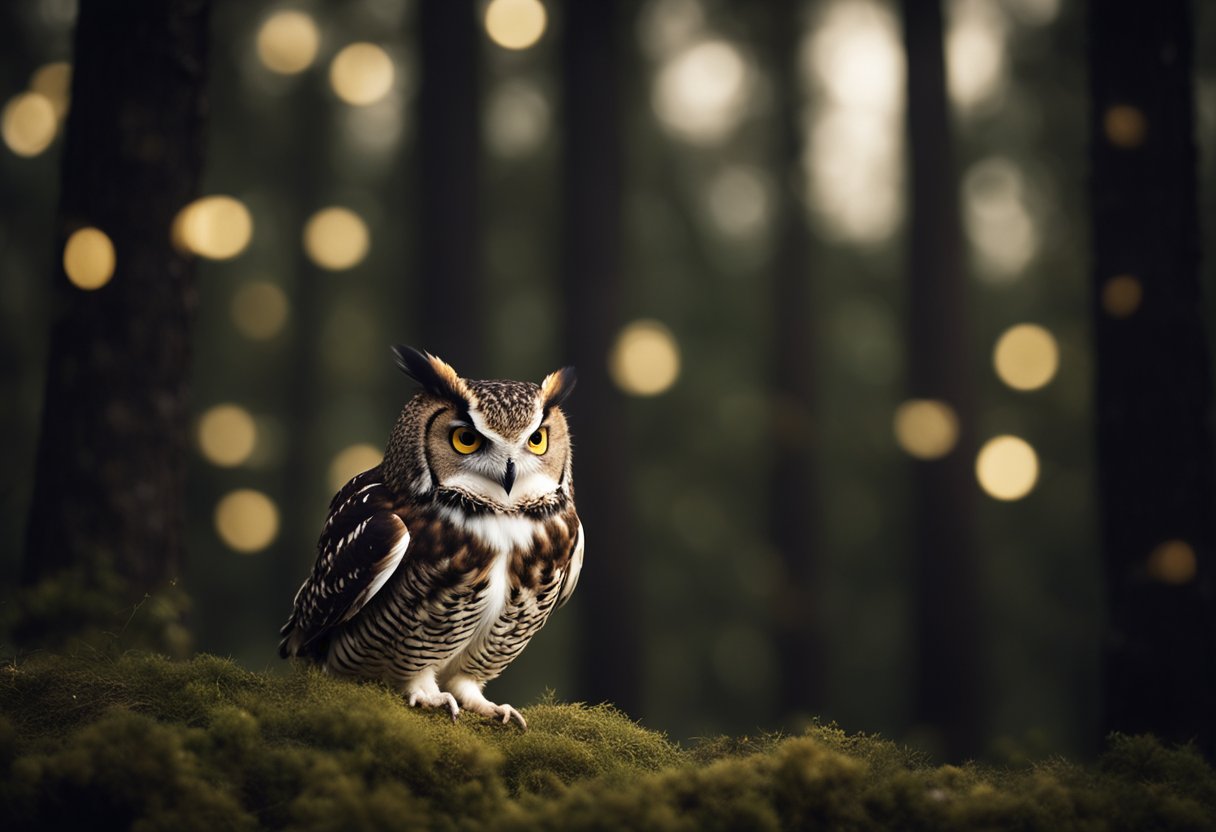
Hamsters are small and vulnerable creatures, making them prey to a variety of predators. These predators can be divided into three categories: domestic predators, wild predators, and human impact.
Domestic Predators
Domestic predators include cats and dogs, which are common household pets. These animals have a natural instinct to hunt and may see a hamster as prey. It is important to keep your hamster’s cage in a safe and secure location away from these animals. Always supervise your pets when they are interacting with your hamster.
Wild Predators
Wild predators include animals such as foxes, owls, weasels, and snakes. In the wild, hamsters have many more predators and must constantly be on alert for danger. These animals are able to sneak up on hamsters and catch them off guard. To protect your hamster from wild predators, keep them in a secure cage and avoid leaving them unattended outside.
Human Impact
Human impact can also be a threat to hamsters. This includes things like habitat destruction, pollution, and hunting. Hamsters are often hunted for their fur, meat, and as pets. It is important to be aware of the impact humans can have on hamster populations and take steps to protect them.
In conclusion, hamsters face a variety of predatory threats from domestic and wild animals, as well as human impact. As a responsible pet owner, it is important to take steps to protect your hamster from these threats and ensure their safety.
Resources

When it comes to hamsters, it’s important to know what their biggest predators are in order to keep them safe. While hamsters are popular pets, they do have natural predators in the wild. Here are some resources to help you understand what those predators are and how to protect your hamster.
1. Sciencing
According to Sciencing, hamsters in the wild are preyed upon by a variety of animals, including snakes, birds of prey, and predatory mammals. While hamsters will defend themselves with their large incisors, it’s important to keep them safe from these predators if they are kept as pets.
2. IFAW
The International Fund for Animal Welfare (IFAW) has a great resource on wild hamsters. They note that there are 15 species of wild hamsters living across Europe and western Asia, and that these small rodents are recognized by their short tails and small, fluffy ears. While they are cute and fluffy, they do face threats from habitat loss and other factors.
3. Hamster’s Day
For more information on the natural predators of hamsters, check out Hamster’s Day. They note that hamsters are small, furry rodents that are threatened by a variety of predators in the wild, including cats, birds of prey, snakes, and foxes. If you have a pet hamster, it’s important to keep them safe from these predators by keeping them indoors or in a secure enclosure.
4. ZooNerdy
Finally, ZooNerdy has a great resource on which animals prey on hamsters. They note that while hamsters are popular pets, they are prey to a number of different animals in the wild. Some of the most common predators include cats, birds of prey, snakes, and foxes. If you’re considering getting a pet hamster, it’s important to understand the risks and take steps to protect them from these predators.
Conclusion
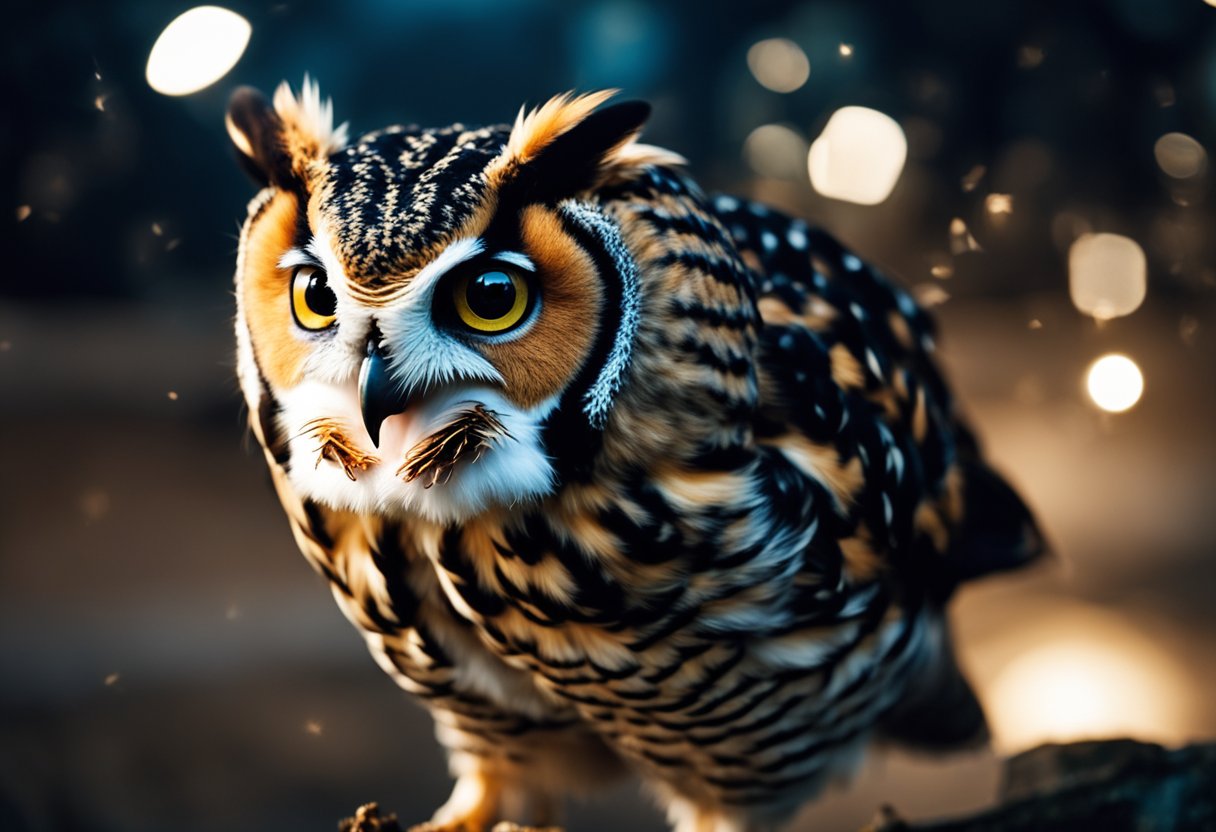
In conclusion, hamsters have a variety of predators that they must watch out for in the wild. These predators include cats, dogs, foxes, owls, weasels, and snakes here. It is important to keep your pet hamster safe by providing them with a secure enclosure and monitoring their interactions with other animals, especially cats and dogs.
Hamsters have evolved a number of defense mechanisms to protect themselves from predators. When feeling threatened, hamsters will display a variety of behaviors including hiding, fleeing, climbing, threatening behavior, biting, or playing dead here. It is important to understand these behaviors and provide your pet hamster with a safe and secure environment to reduce their stress levels.
Overall, while hamsters may be small and cute, they are still prey animals in the wild. As a responsible pet owner, it is your duty to provide them with a safe and secure environment to protect them from potential predators. By understanding the behaviors and needs of your pet hamster, you can create a happy and healthy home for them to thrive in.
Frequently Asked Questions
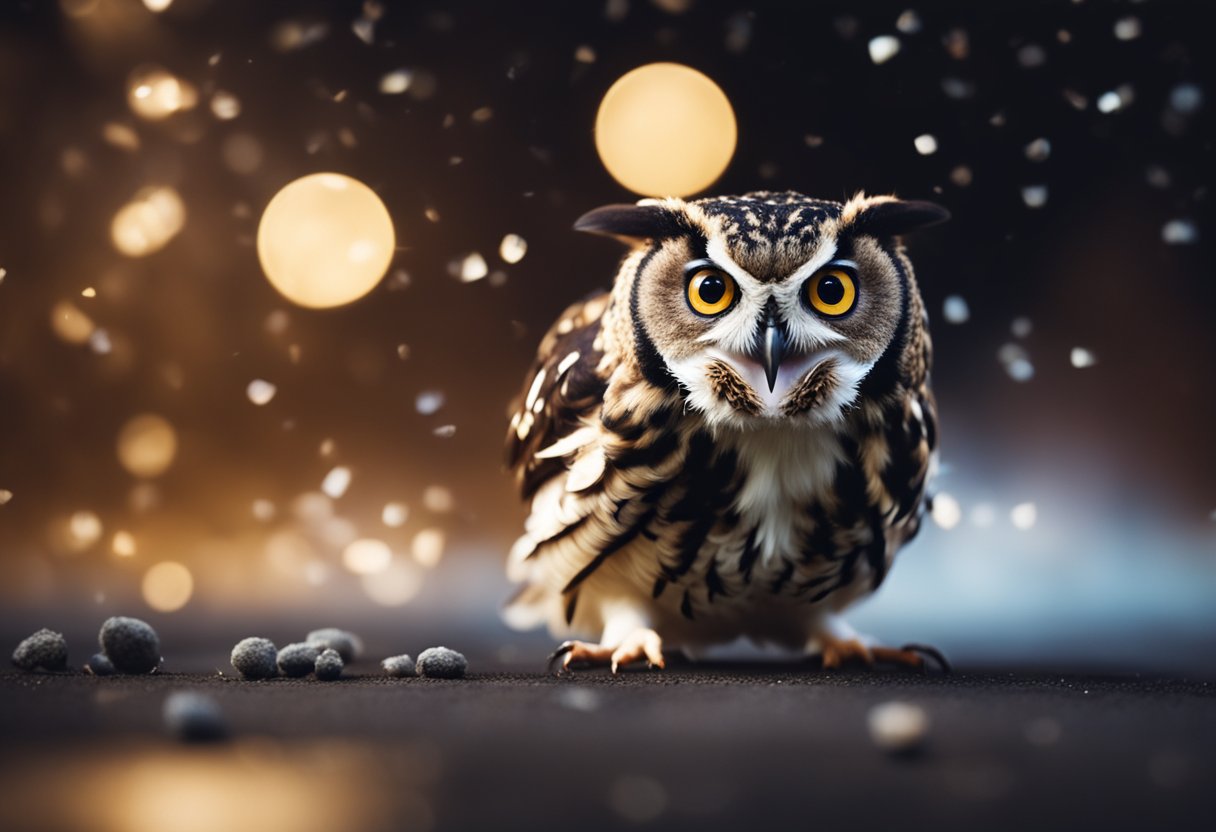
What are the common predators of hamsters in the wild?
Hamsters have a number of natural predators in the wild. These include snakes, birds of prey, and predatory mammals. Some of the mammals that are known to hunt hamsters include foxes, weasels, and stoats.
Which birds of prey pose a threat to hamsters?
Birds of prey that are known to hunt hamsters include owls and hawks. These birds have excellent eyesight and are able to spot small prey from a great distance. Once they have located a hamster, they will swoop down and grab it with their sharp talons.
How do hamsters defend themselves from predators?
Hamsters have a number of ways to defend themselves from predators. They have large incisors that they can use to bite predators. They can also run quickly to escape danger. Female hamsters are known to carry their young in their cheek pouches to protect them from predators.
What type of animals are known to hunt hamsters?
In addition to snakes, birds of prey, and predatory mammals, other animals that are known to hunt hamsters include domesticated cats and dogs. These animals are attracted to the small size and quick movements of hamsters, making them easy prey.
Are domesticated hamsters at risk from any predators?
Domesticated hamsters are generally kept in cages and are not at risk from predators. However, it is important to keep their cages secure and to supervise them when they are outside of their cages to prevent attacks from other pets.
Do any larger mammals consider hamsters as prey?
While hamsters are generally too small to be considered prey by larger mammals, there have been reports of wild hamsters being hunted by animals such as badgers and wild boars. However, these incidents are rare and hamsters are not a primary food source for these animals.
